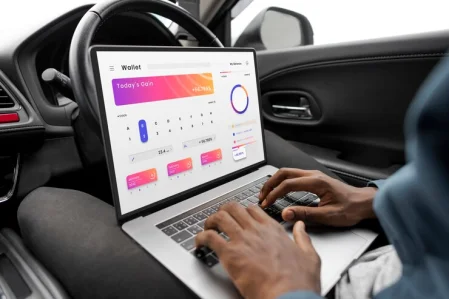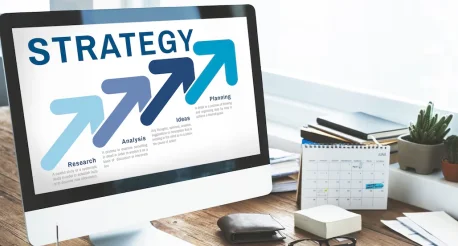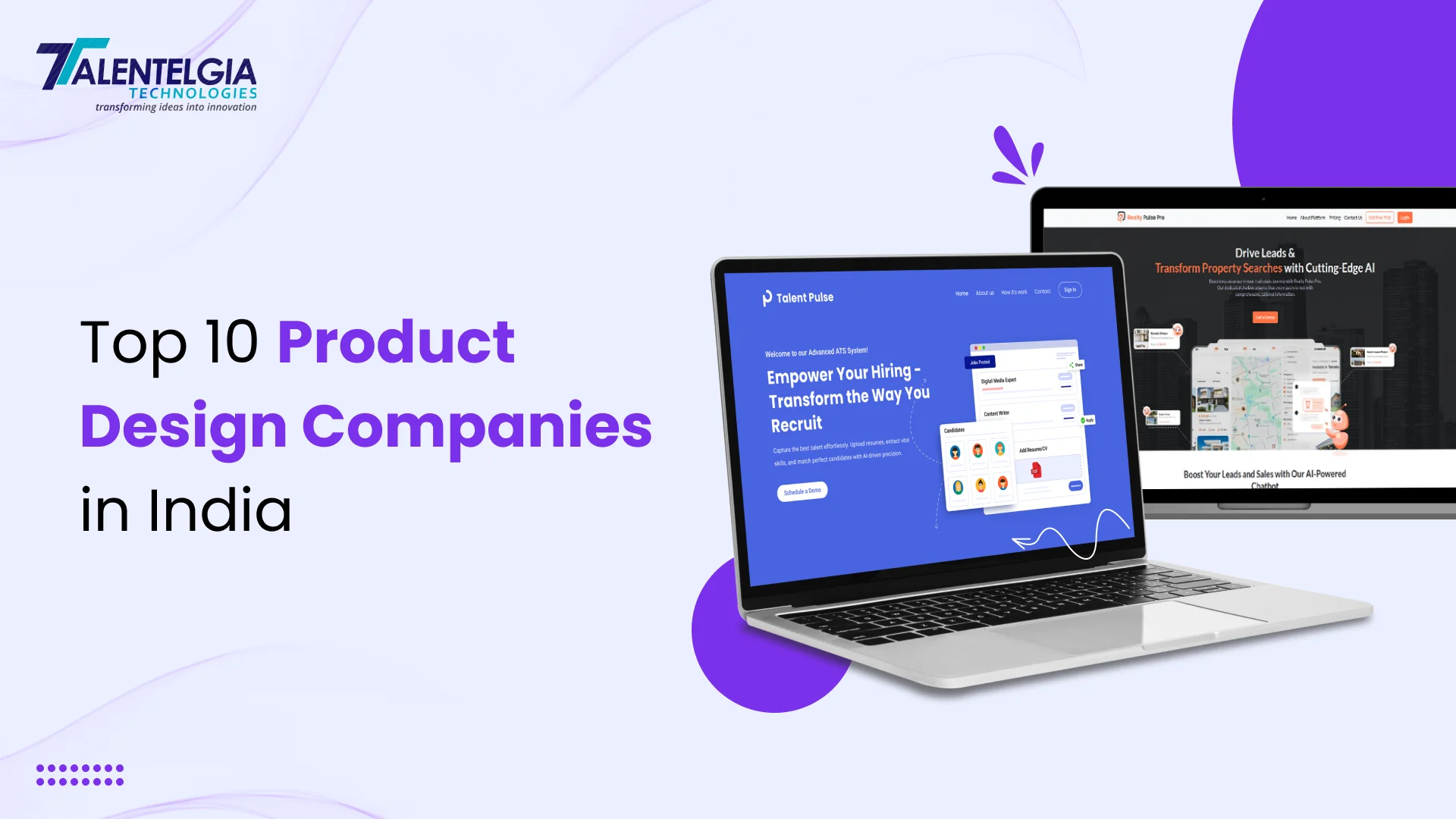User Interface (UI) and User Experience (UX) design can make or break a product’s user adoption, retention, and ultimately its success in the market. Through these case studies, we hope to provide insights and inspiration for your next UI/UX design project.
UI/UX design can make or break a project—even the most well-intentioned concept can flop without proper consideration of user experience.
with Expert Designing
Services. UI/UX, graphic design services from our
skilled designers. Serving 20+ countries
for over a decade.

In this article, I’ll focus on specific case studies of successful UI/UX projects and their results.
You’ll get real-world examples of how UI/UX design strategies can create value for businesses and their customers.
UI/UX Design Principles & Best Practices
For starters, you want to keep your target market in mind. Who are they? What do they need? Once you have a better understanding of your users, you can begin to identify their pain points and craft a UI/UX design plan tailored to address their needs.
Crucially, you should also strive for simplicity—the easier to use the product is, the more likely users will return and recommend it to others.
Finally make sure you are constantly testing your design on real users and gathering feedback through A/B testing and usability testing. Doing this will not only help ensure your images align with the needs of your target market—it will also give you insight into otherwise overlooked areas of growth.
User Research & Persona Design
How do you make sure it’s something people will want to use? Enter user research and persona design. These best practices help take the guesswork out of designing a product interface or experience that users will deem useful, and relevant.
User research involves collecting contextual data on who is likely to be using your product and what problems they might have that your product needs to solve. This can come from surveys, interviews, focus groups, or other types of data collection. With this information in hand, you’ll be able to create user personas—fictional representations of your ideal users based on data like demographic information, lifestyle habits, motivations and goals.
Once established, UI/UX designers can then create designs with the user personas in mind—ensuring the product interface is intuitive, easy-to-use, and meets the user’s desired outcomes. By taking this approach instead of simply guessing how users might interact with a product or service, successful companies are able to make real progress toward maximum customer satisfaction.
App Development & Prototyping
Prototyping can help teams discover shortcomings in their design before they get too far into actual development. It also allows them to see how different elements of the design will look and function together.
Case Study: Microsoft Translator
One example of effective prototyping is Microsoft Translator, which is an AI-powered language translator app. The teams in charge of the app used prototypes to quickly iterate on the design, so they were able to ensure that their product was polished before launching. They also used prototypes for usability testing, which enabled them to get feedback from users early on and make any necessary changes before the launch.
Development Process
Teams need to ensure that their code is bug-free and that all features are functioning properly before launching a product. This step takes time, but it’s essential if you want to create an enjoyable user experience for your customers.
The teams behind Microsoft Translator incorporated continuous integration practices into their development process, which allowed them to quickly identify and fix any bugs in the code before they could impact users. This approach saved them time and money in the long run, resulting in a successful app launch.
Usability Testing & Iterative Design
Well, there’s no substitute for usability testing and iterative design. It’s a method of incremental improvement based on user feedback and analytics data analysis.
with Top-Tier Design
Expertise. Top-tier UI/UX and graphic design
services.Serving 20+ countries
for over a decade

The process looks something like this:
- Collect data from user testing, lab studies or surveys about how users interact with the design.
- Analyze the data and identify areas for improvement.
- Develop a set of hypotheses about how to improve the UI/UX design.
- Test out those hypotheses with prototyping, simulation or user interviews to get further feedback from users and refine prototypes accordingly.
- Incorporate the results into an improved version of your product design and re-test to make sure it works as intended and delivers a positive user experience.
- Plus, if your users are satisfied with their experience, they’ll be more likely to stick around longer, leading to a better bottom line for your company in the long run!
Successful UI/UX Case Studies – Before & After
Have you ever seen a “before & after” of a successful product design project?
Let’s go through some of the most successful UI/UX case studies and their resulting transformations.
Software Company A
Software Company A had an outdated UI with slow performance and no mobile application. After an extensive round of design changes, user testing and iterations, Software Company A saw a tremendous increase in customers being able to complete tasks quickly and efficiently—customer satisfaction jumped from 47% to 85%!
Retail Company B
Retail Company B had an inefficient checkout system that was limiting customers from making purchases online. The UI/UX designers went to work streamlining the checkout process and reducing customer pain points. These changes resulted in improved efficiency across all of their platforms, resulting in increased sales conversions from both desktop and mobile customers alike—an increase of 30%!
These are just a few examples of how thoughtful UI/UX design strategies can lead to amazing results for product success. Regardless of whether it’s modernizing an existing website or creating an entirely new mobile app—designers should strive for solutions that create positive outcomes every step of the way.
Measuring and Tracking UI/UX Metrics
Another thing you might not know is the importance of measuring and tracking UI/UX metrics in order to measure the success of a product design. You have all the best ideas in the world, but if you don’t measure and track their success, then how can you know that you’re getting true value for your investment?
Let’s take a look at some of the most important UI/UX metrics that can help you get a better understanding of how successful your product design is:
Usage Metrics
Usage Metrics are important for measuring how much people are actually interacting with your product or service. How many page views do we get?”, “How many active users do we have?”, “What content is most effective?”. It can help to gain perspective on consumer engagement and usage patterns.
Engagement Metrics
Engagement Metrics give you an idea of how customers interact with each feature within a product or service. Questions such as “What features are most interesting?”, “What features have a positive impact on conversion?”, “What features need to be improved or updated?”? It will give you valuable insights into customer interactions with your product or service.
Retention Metrics
Retention Metrics measure customer loyalty over time by tracking whether customers return to use the product or service again after their initial experience. Questions like “how long do customers stay engaged?”, “which features keep users coming back?”, and “what causes users
Conclusion
In today’s market, user experience drives customer decisions. That’s why it’s so important to make sure you’re investing in user-friendly, results-driven UI/UX design. The case studies in this article have offered an inspiring look into what good design can do, across various platforms and industries.
This article has shown us that UI/UX design must be user-focused and grounded in data to be successful. When employed correctly, a great design strategy can have lasting effects on a business’s success. Good UI/UX design ensures user satisfaction, loyalty, and engagement.
At Talentelgia Technologies, we understand the importance of UI/UX design and offer a wide range of design services to help our clients create successful products.
If you want to create a successful product with a UI/UX design that sets it apart from the competition, look no further than Talentelgia Technologies. We offer the best UI/UX design services in the business, and we’re ready to help you take your product to the next level.


 Healthcare App Development Services
Healthcare App Development Services
 Real Estate Web Development Services
Real Estate Web Development Services
 E-Commerce App Development Services
E-Commerce App Development Services E-Commerce Web Development Services
E-Commerce Web Development Services Blockchain E-commerce Development Company
Blockchain E-commerce Development Company
 Fintech App Development Services
Fintech App Development Services Fintech Web Development
Fintech Web Development Blockchain Fintech Development Company
Blockchain Fintech Development Company
 E-Learning App Development Services
E-Learning App Development Services
 Restaurant App Development Company
Restaurant App Development Company
 Mobile Game Development Company
Mobile Game Development Company
 Travel App Development Company
Travel App Development Company
 Automotive Web Design
Automotive Web Design
 AI Traffic Management System
AI Traffic Management System
 AI Inventory Management Software
AI Inventory Management Software
 AI Software Development
AI Software Development  AI Development Company
AI Development Company  AI App Development Services
AI App Development Services  ChatGPT integration services
ChatGPT integration services  AI Integration Services
AI Integration Services  Generative AI Development Services
Generative AI Development Services  Natural Language Processing Company
Natural Language Processing Company Machine Learning Development
Machine Learning Development  Machine learning consulting services
Machine learning consulting services  Blockchain Development
Blockchain Development  Blockchain Software Development
Blockchain Software Development  Smart Contract Development Company
Smart Contract Development Company  NFT Marketplace Development Services
NFT Marketplace Development Services  Asset Tokenization Company
Asset Tokenization Company DeFi Wallet Development Company
DeFi Wallet Development Company Mobile App Development
Mobile App Development  IOS App Development
IOS App Development  Android App Development
Android App Development  Cross-Platform App Development
Cross-Platform App Development  Augmented Reality (AR) App Development
Augmented Reality (AR) App Development  Virtual Reality (VR) App Development
Virtual Reality (VR) App Development  Web App Development
Web App Development  SaaS App Development
SaaS App Development Flutter
Flutter  React Native
React Native  Swift (IOS)
Swift (IOS)  Kotlin (Android)
Kotlin (Android)  Mean Stack Development
Mean Stack Development  AngularJS Development
AngularJS Development  MongoDB Development
MongoDB Development  Nodejs Development
Nodejs Development  Database Development
Database Development Ruby on Rails Development
Ruby on Rails Development Expressjs Development
Expressjs Development  Full Stack Development
Full Stack Development  Web Development Services
Web Development Services  Laravel Development
Laravel Development  LAMP Development
LAMP Development  Custom PHP Development
Custom PHP Development  .Net Development
.Net Development  User Experience Design Services
User Experience Design Services  User Interface Design Services
User Interface Design Services  Automated Testing
Automated Testing  Manual Testing
Manual Testing  Digital Marketing Services
Digital Marketing Services 
 Ride-Sharing And Taxi Services
Ride-Sharing And Taxi Services Food Delivery Services
Food Delivery Services Grocery Delivery Services
Grocery Delivery Services Transportation And Logistics
Transportation And Logistics Car Wash App
Car Wash App Home Services App
Home Services App ERP Development Services
ERP Development Services CMS Development Services
CMS Development Services LMS Development
LMS Development CRM Development
CRM Development DevOps Development Services
DevOps Development Services AI Business Solutions
AI Business Solutions AI Cloud Solutions
AI Cloud Solutions AI Chatbot Development
AI Chatbot Development API Development
API Development Blockchain Product Development
Blockchain Product Development Cryptocurrency Wallet Development
Cryptocurrency Wallet Development About Talentelgia
About Talentelgia  Our Team
Our Team  Our Culture
Our Culture 
 Healthcare App Development Services
Healthcare App Development Services Real Estate Web Development Services
Real Estate Web Development Services E-Commerce App Development Services
E-Commerce App Development Services E-Commerce Web Development Services
E-Commerce Web Development Services Blockchain E-commerce
Development Company
Blockchain E-commerce
Development Company Fintech App Development Services
Fintech App Development Services Finance Web Development
Finance Web Development Blockchain Fintech
Development Company
Blockchain Fintech
Development Company E-Learning App Development Services
E-Learning App Development Services Restaurant App Development Company
Restaurant App Development Company Mobile Game Development Company
Mobile Game Development Company Travel App Development Company
Travel App Development Company Automotive Web Design
Automotive Web Design AI Traffic Management System
AI Traffic Management System AI Inventory Management Software
AI Inventory Management Software AI Software Development
AI Software Development AI Development Company
AI Development Company ChatGPT integration services
ChatGPT integration services AI Integration Services
AI Integration Services Machine Learning Development
Machine Learning Development Machine learning consulting services
Machine learning consulting services Blockchain Development
Blockchain Development Blockchain Software Development
Blockchain Software Development Smart contract development company
Smart contract development company NFT marketplace development services
NFT marketplace development services IOS App Development
IOS App Development Android App Development
Android App Development Cross-Platform App Development
Cross-Platform App Development Augmented Reality (AR) App
Development
Augmented Reality (AR) App
Development Virtual Reality (VR) App Development
Virtual Reality (VR) App Development Web App Development
Web App Development Flutter
Flutter React
Native
React
Native Swift
(IOS)
Swift
(IOS) Kotlin (Android)
Kotlin (Android) MEAN Stack Development
MEAN Stack Development AngularJS Development
AngularJS Development MongoDB Development
MongoDB Development Nodejs Development
Nodejs Development Database development services
Database development services Ruby on Rails Development services
Ruby on Rails Development services Expressjs Development
Expressjs Development Full Stack Development
Full Stack Development Web Development Services
Web Development Services Laravel Development
Laravel Development LAMP
Development
LAMP
Development Custom PHP Development
Custom PHP Development User Experience Design Services
User Experience Design Services User Interface Design Services
User Interface Design Services Automated Testing
Automated Testing Manual
Testing
Manual
Testing About Talentelgia
About Talentelgia Our Team
Our Team Our Culture
Our Culture


















 Write us on:
Write us on:  Business queries:
Business queries:  HR:
HR: 




